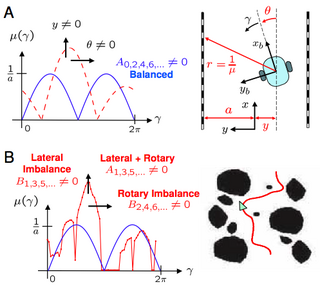Characterization of Insect Flight Control Systems: Difference between revisions
mNo edit summary |
mNo edit summary |
||
| (8 intermediate revisions by 2 users not shown) | |||
| Line 1: | Line 1: | ||
{{righttoc}} This is a joint project with [http://dickinson.caltech.edu Michael Dickinson], funded by the [http://www.icb.ucsb.edu/ ARO Institute for Collaborative | {{righttoc}} This is a joint project with [http://dickinson.caltech.edu Michael Dickinson], funded by the [http://www.icb.ucsb.edu/ ARO Institute for Collaborative Biotechnologies]. This page primarily describes the work done in Richard Murray's group. | ||
{| width=100% | {| width=100% | ||
|- valign=top | |- valign=top | ||
| width=50% | Current participants: | | width=50% | Current participants: | ||
* None | |||
| width=50% | Past participants: | |||
* {{Andrea Censi}} | |||
* {{Sawyer Fuller}} | * {{Sawyer Fuller}} | ||
* {{Shou Han}} | * {{Shou Han}} | ||
* Sean Humbert (U. Maryland) | |||
* {{Francisco Zabala}} | * {{Francisco Zabala}} | ||
|} | |} | ||
== Objectives == | == Objectives == | ||
The current global objective of the project is to characterize and mathematically formalize (i.e. reverse engineer) the sensory-motor control system of the fly to a degree that its salient features can be used for the design of micro air vehicles and other autonomous systems of interest to the military. Toward this high-level goal, we are characterizing through direct experimentation and modeling the key components of the flight control system including (1) take-off, (2) robustness to | {| style="float: right" width=40% border=1 | ||
|- | |||
| | |||
[[Image:insect-flight.png|320px]]<br> | |||
Bio-inspired visio-motor control. This figure shows the results of an insect-inspired, vision-based control algorithm. A set of wide-field integration kernels are used to react to the environment. The upper figure shows an integration kernel (blue) used for corridor following. The optical flow when centered in the corridor is shown as a dashed line and the integral of the product of these two functions is zero when the system is centered in the corridor. The lower figure shows the application of this same integration kernel to a cluttered environment, allowing motion that avoids obstacles. | |||
|} | |||
The current global objective of the project is to characterize and mathematically formalize (i.e. reverse engineer) the sensory-motor control system of the fly to a degree that its salient features can be used for the design of micro air vehicles and other autonomous systems of interest to the military. Toward this high-level goal, we are characterizing through direct experimentation and modeling the key components of the flight control system including (1) take-off, (2) robustness to wind gusts, (3) chemical tracking, and (4) sensory fusion (of visual and gyroscopic input). In most of our research we are using the common fruit fly, Drosophila, as our model system for studying and extracting flight control algorithms and architecture. | |||
== Publications == | == Publications == | ||
* {{chfm09-cdc}} | |||
* {{ful_07-ine}} | |||
* {{eps_07-acc}} | |||
* {{hmd05-cdc}} | |||
* {{jsh05-phd}} | |||
* {{hmd05-ifac}} | |||
* {{rei_03-acc}} | |||
Latest revision as of 21:23, 26 May 2020
This is a joint project with Michael Dickinson, funded by the ARO Institute for Collaborative Biotechnologies. This page primarily describes the work done in Richard Murray's group.
Current participants:
|
Past participants:
|
Objectives
The current global objective of the project is to characterize and mathematically formalize (i.e. reverse engineer) the sensory-motor control system of the fly to a degree that its salient features can be used for the design of micro air vehicles and other autonomous systems of interest to the military. Toward this high-level goal, we are characterizing through direct experimentation and modeling the key components of the flight control system including (1) take-off, (2) robustness to wind gusts, (3) chemical tracking, and (4) sensory fusion (of visual and gyroscopic input). In most of our research we are using the common fruit fly, Drosophila, as our model system for studying and extracting flight control algorithms and architecture.
Publications
- A bio-plausible design for visual attitude stabilization, Andrea Censi, Shuo Han, Sawyer B Fuller, Richard M Murray. Conference on Decision and Control (CDC), 2009.
- Flight control in a flapping-wing fruit fly simulator, Sawyer B Fuller, Michael Epstein, Stephen Waydo, Will B Dickson, rew D Straw, Michael H Dickinson, Richard M Murray. The Neuromorphic Engineer, 2007.
- Bioligically Inspired Feedback Design for Drosophila Flight, Michael Epstein, Stephen Waydo, Sawyer B. Fuller, Will Dickson, Andrew Straw, Michael H. Dickinson and Richard M. Murray. American Control Conference (ACC), 2007.
- A Control-Oriented Analysis of Bio-Inspired Visuomotor Convergence, J. Sean Humbert and Richard M. Murray and Michael H. Dickinson. Conference on Decision and Control (CDC), 2005.
- Bio-Inspired Visuomotor Convergence in Navigation and Flight Control Systems, J. Sean Humbert. PhD dissertation, Control and Dynamical Systems, 2005
- Sensorimotor Convergence in Visual Navigation and Flight Control Systems, J. Sean Humbert, Richard M. Murray, Michael H. Dickinson. IFAC World Congress, 2005.
- Vision as a Compensatory Mechanism for Disturbance Rejection in Upwind Flight, Michael B. Reiser, J. Sean Humbert, Mary J. Dunlop, Domitilla Del Vecchio, Richard M. Murray, Michael H. Dickinson. American Control Conference (ACC), 2004.
